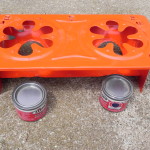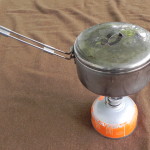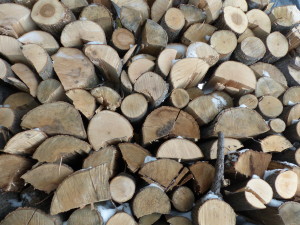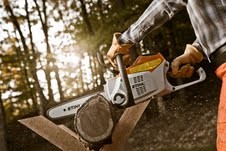by Winding Pathways | Jan 18, 2016 | Geology/Weather, Nature, Preparedness

Dress in Layers, wear sturdy, insulted boots, and soak up Vitamin D with a brief “sun bath” even on cold winter days.
The woman giving our local television station’s weather report issued a dire warning. “It’s going to be below zero tomorrow with strong wind. It will feel like 30 below zero out. Stay inside”, she advised!
A gorgeous sunrise launched the next morning. It was a cold six below zero out but with only slight wind. Birds and squirrels arrived at the feeder, snatched a few seeds and flew or scampered off to enjoy breakfast in a sunny spot sheltered from the breeze.
Rarely do we have weather so bad that everyone must stay indoors. Certainly some days are more pleasant than others but at Winding Pathways we go outside, even if briefly, whether it’s frigid or broiling out -mainly to tend our animals. We mimic wildlife.
When August’s heat and humidity envelop Iowa we follow the pattern of the cottontail that lives in our yard. He and we are out in the evening and early morning. In mid-day we shun the sun and enjoy our maple’s cool shade. On blustery winter days we layer up and explore our yard, even if for just a short time. Modern clothing is amazingly effective keeping us comfortable as long as we do like our chickadees and find a sunny place out of the wind. We don’t fool around with tornadoes. If one’s approaching we heed the weather caster’s advice and stay in the basement. But, as soon as it passes we’re out in the yard.
Take temperature extremes seriously. Unusually hot or cold weather can cause serious physical problems, even death, but a prudent person who takes precautions and uses common sense will enjoy fresh air even in extreme weather.
BE CAREFUL, DRESS APPROPRIATELY, AND AVOID BEING UNDULY “SCARED” BY THE WEATHER REPORT.
“Climb the mountains and get their good tidings. Nature’s peace will flow into you as sunshine flows into trees. The winds will blow their own freshness into you, and the storms their energy, while cares will drop off like autumn leaves,” John Muir.
by Winding Pathways | Dec 29, 2015 | Preparedness

Battery operated lamps (left) are the safest to use indoors in the aftermath of storms. Be cautious if using propane lamps danger of fire and carbon monoxide poisoning.
On the evening of December 28, 2015 national news reported that thousands of people in the South are without power due to tornadoes that ripped through the region. The situation wasn’t much better in the Midwest where a howling blizzard also cut off electricity.
Many people are unprepared to ride out a week or ten days without electricity. Gathering a few emergency supplies and equipment can make enduring a storm much more comfortable. Every home should have them. While a preparedness kit may not make it in a home destroyed by tornadoes, neighbors sharing their kits could be the difference between danger and safety.
Click on the PREPAREDNESS tab on this website to learn how to manage a power outage in relative comfort.
by Winding Pathways | Aug 15, 2015 | (Sub)Urban Homesteading, Energy Efficiency, Preparedness
Nothing is as cozy as basking in wood stove’s warmth on blustery January nights, but planning efficient and safe stove operation is a year round activity. Well before the first frost we have our chimney cleaned and check the stove for safe operation.
August’s humid heat is a great time to anticipate plunging fall temperatures. Cool air is only a month away to be followed by frigid winter blasts. Now is the time to check the wood stove and clean the chimney. When few other people are thinking about winter.
Chimney fires are one of the great dangers of burning wood. These happen when creosote builds up on the inside of the chimney walls. This crusty stuff is flammable and can be ignited from a hot burning stove. Flames roaring up the chimney are terrifying and often set the house on fire.
At Winding Pathways we do these things to reduce the odds that our chimney will catch fire:
CLEAN AND CHECK: In late summer we hire a professional sweep to clean and inspect our stove and chimney. A chimney sweep will remove creosote and inspect the stove and chimney to make sure they are safe. So, we start the cool season with a whistle clean chimney.
BURN CLEAN, SEASONED WOOD: Creosote buildup is most frequently caused by burning wet or dirty wood. Wood from most pines and some other species burns with much smoke that creates creosote. Except to use a little pine for kindling we avoid burning it and other wood from coniferous trees. In general wood from trees that drop their leaves each fall, called deciduous trees, burns cleaner than pine, spruce, and fir, but it must be well seasoned.
A living trees’ wood contains an amazing amount of water needed for tree health. Wood from a recently cut live tree doesn’t burn well. It hisses as hidden water evaporates from the fire’s heat. Boiling water out of wet wood consumes energy that doesn’t end up as heat in the home and creates a cool fire that’s likely to deposit creosote in the chimney.
Wood needs to be properly seasoned. To make sure we burn dry seasoned wood we do these things:
- Split all firewood. Wood dries from the cut surface, rather than through the bark. Splitting exposes much more wood to the air than unsplit pieces, so it dries quicker and more thoroughly. Generally the smaller the piece of wood the faster it will season.
- Keep firewood off the ground and under cover. We season firewood on pallets to allow air to circulate underneath. Most of our wood is stored in a woodshed with excellent side ventilation and a solid roof to keep off rain. The rest is stored under a tarp in a breezy place.
- Give it plenty of time. Six inch diameter pieces of unsplit firewood could take up to two years to thoroughly cure, even when stacked in a dry place. If split and if stacked in a dry breezy place seasoning can take as little as four to six months. Seasoning usually means cutting wood this year for burning the next year’s winter. Not the on-coming winter.
- Pay attention to species. We’ve learned to identify species by looking at cut wood and also the tree. The amount of energy held in a piece of wood varies greatly by species. For example a chunk of hickory contains about twice the heat as the same sized piece of cottonwood or aspen. We don’t turn our noses up at woods that yield less heat. Plenty of cottonwood, silver maple, box elder and aspen have kept us warm. These species may hold lower amounts of energy than oak or hickory but their wood burns cleanly if properly seasoned. Of course, we prefer oak, hickory, locust, or sugar maple but if other species are convenient and available we cut, season and burn it.
OPERATE THE STOVE CAREFULLY: Most creosote forms when stoves are allowed to burn at cool temperatures. This normally happens when fueled with unseasoned wood or when the stove’s air intake is reduced. Choking down the air intake so a fire smolders all night is a recipe for creosote buildup. We run our stove with a brisk hot fire all day and never choke down the air intake. If our fire goes out overnight we simply light a new one the next morning.
FOR INFORMATION
To find a certified chimney sweep check Certified Chimney Professional.
A good chart of wood energy content by species is at Chimney Sweeps Online.
by Winding Pathways | May 3, 2015 | (Sub)Urban Homesteading, Energy Efficiency, Preparedness
Many homeowners harvest beans, squash, and tomatoes from their garden. Some collect delicious eggs from a small
backyard flock. Too few harvest one of life’s free necessities – Rain Water!
We set up five rain barrels at Winding Pathways a few years ago. They are so handy we don’t know why we didn’t start harvesting rain years ago. Rain barrels are relatively inexpensive and easy to set up. Water from the barrels irrigates thirsty gardens, provides drinking water for our backyard hens, and is handy for rinsing off dirty hands and tools when working outside. 
Tap water costs money. Rain water is free. It’s delivered by nature without chlorine. Too many homeowners swish rainwater down storm sewers and pay their city for tap water to irrigate.
Rain barrels yield free water but also create social and environmental benefits. They reduce pressure on municipal water systems and wells during droughts and reduce erosion and flooding caused by runoff.
A rain barrel is simply a container that collects and stores water falling on the roof. A faucet positioned low on the barrel makes filling a bucket or attaching a hose easy.
They are hardly a new technology. People have been catching and using rain for thousands of years, especially in arid areas. Relatively new are myriads of lightweight attractive barrels on the market, ranging from plain and simple to highly decorative. Most hold about 50 gallons. Do it “yourselfers” can easily make a rain barrel from a 55 gallon drum and fittings sold in any hardware store.
Most first time rain barrel users are astonished at how much water falls on the roof during even a minor shower. For example 625 gallons of rain falls on a 1000 foot roof during a one inch storm. That would fill nine or ten typical sized barrels, and most houses these days are much larger than 1000 square feet. Even during Iowa’s occasional droughts enough occasional showers fall on our roof at Winding Pathways that we always seem to have water in our five barrels.
What’s Needed to Harvest Rain?
Setting up a rain barrel outside a home that has gutters and downspouts is easy. All that’s needed is the barrel itself, a stand to elevate it, and a way to point the downspout so water goes into the top of the barrel.
The Barrel: Many websites detail how to make a rain barrel from common materials. Simply GOOGLE How to Make a Rain Barrel and several excellent well illustrated instructional sites appear. Manufactured rain barrels can be purchased in big box stores that sell yard and garden equipment. They can also be ordered from numerous places online.
The Stand: A stand gets the barrel up off the ground. Normally a hose fitting is situated near the barrel’s bottom to allow complete draining. We made stands from lumber scrounged from construction site dumpsters. They are about 18 inches tall. Placing the barrel on several cinder blocks is even simpler and requires no carpentry. Remember that a rain barrel holding 50 gallons of water weighs around 400 pounds. Stands must be stout.
The Downspout: Most downspouts extend from the gutter to the ground. Situate the stand and rain barrels below or near a downspout. Common soft aluminum or plastic spouts are easy to cut with a hacksaw. Cut it off above the height of the rain barrel so water falls directly into the top of the barrel. Or, if the barrel needs to be set to the side of the downspout buy a 90 or 45 degree angle elbow from a hardware store and attach it so water reaches the barrel. Be sure to drill a few holes in the joint and secure it with sheet metal screws.
Where to Locate the Barrel. Obviously a rain barrel needs to be located near a downspout, but most houses have several of them. Put the barrel as close as possible to the garden or wherever the water will be used.
Hooking More Than One Together. Most people start with just one rain barrel and then discover that it fills quickly in just a light rain. And, it’s easy to use all the water quickly. The solution is simple. Set up several rain barrels in a way that once the first barrel fills water flows through a small tube into the second, third, and any subsequent ones.
Rain Barrel Maintenance. Barrel maintenance is important but simple. Every five or six weeks we drain our barrels, brush the inside to dislodge the slimy material that forms on the plastic, and wash it out with tap water from a hose. Ice can crack a rain barrel, so in late fall we drain ours, turn them upside down for the winter, and put a rock on top (actually the inverted bottom) to keep the wind from blowing them away.
A Caution. Most roofs are constructed of nontoxic materials, but some may leech toxic chemicals into rainwater. Most cedar shakes have been treated with chemicals so don’t harvest water from such a roof. It’s best to wait three or four months after installing a new asphalt roof before collecting rain.
It’s exciting to bring fresh eggs into the kitchen from a flock of backyard hens, and another satisfying delight of the yard is the delicious beans, chard, and other vegetables that come from the garden. Harvesting free rain after a summer shower is another pleasure offered by a wondrous yard.

COMPANY PROFILE
RAINWATER SOLUTIONS
A few years ago Lynn and Mike Ruck, owners of Rainwater Solutions, helped the Indian Creek Nature Center in Cedar Rapids, Iowa mount a major effort to encourage residents to buy and install barrels they make. Eager residents retrieved barrels they had ordered from the back of a huge semi-truck, and soon nearly 1000 residents began harvesting water.
Many companies make and sell excellent rain barrels. We use ones made by Rainwater Solutions at Winding Pathways, and they’ve served us well. One of their models, called The Moby, holds 65 gallons while its slimmer cousin, The Ivy, holds 50.
Rain Water Solutions rain barrels are made in the USA of 100% recycled content. It is their mission to work with government agencies and non-profits to use rain barrels as an education / outreach tool for water conservation and water quality issues. They also design, consult, and install above and below ground rainwater harvesting systems. For information check their website at www.rainwatersolutions.com.
by Winding Pathways | Mar 19, 2015 | Preparedness
We discovered another reason why every household should have basic camping equipment, even if the owners never go camping.
We hired a local company to repair, sand, and finish an old wooden kitchen floor. During the project we couldn’t access our refrigerator or stove. Camping gear came to the rescue. For a couple of days we cooked on our portable camping stove, while an ice chest kept yogurt, milk and other perishables cool.
Massive storms are increasingly knocking out utilities, and millions of Americans have had to endure upwards of a week without electricity. A camp stove, lantern and ice chest make riding out a storm more comfortable, and they can come in handy during a renovation.

This two burner Sterno keeps food warm but is less useful for cooking. Great for old style fondue parties!
There are three basic types of camping stoves. Most common are two burner gas models fueled by green propane bottles commonly sold in grocery, camping, and hardware stores. They are convenient and easy to use. A second type is fueled by gasoline, sometimes called Coleman fuel. These stoves are efficient but take skill and patience to operate properly. A third type is a simple folding stove that runs on gelled fuel, often called Sterno.
Propane and white gas stoves enable extensive cooking and many an outstanding meal has come off them. Gas and propane stoves must be used where there is good outdoor ventilation. Using them on an outside picnic table is ideal. Sterno type stoves don’t produce enough heat long enough for significant cooking but are handy for warming up food and making an occasional cup of tea.
A diversity of camping lanterns is on the market and they’re ideal for when the power goes off. Some are fueled by propane or liquid gas. But the safest and easiest models are battery powered. They are safe indoors and models with LED bulbs provide hours of light on one set of batteries.

This fast heating camp stove is great for backpacking and to heat water and cook food in an emergency.
Camping stoves, lanterns and ice chests can be purchased at big box and camping stores, but used ones are often found at garage sales at bargain prices. Be sure to have enough fuel or batteries on hand to last a week.
by Winding Pathways | Feb 5, 2015 | (Sub)Urban Homesteading, Preparedness
Every once in a while every homeowners needs to cut wood. Hedges overgrow. Branches break and land in the driveway. Trees need pruning. And sometimes firewood must be cut.
There’s been a recent evolution in saws that helps homeowners manage trees and shrubs. Muscle powered types have been around for years. Gasoline chainsaws appeared in the 1950s and keep improving in ease of use, safety and efficiency. Recently, cordless electric saws entered the market. Each type saw has strong benefits and some drawbacks.
USING MUSCLES
If you just need to cut a few fallen branches, don’t buy an inexpensive chainsaw at a big box store. For small jobs a sharp muscle powered saw is often best.
Here are some advantages:
- Much less expensive than a chainsaw.
- No need for gasoline. Human power works and yields exercise!
- No noisy motor to barrage the air or break down.
- Need little storage space and last for years.
- Blade can be re-sharpened or replaced on a bow saw.
Here is one disadvantage:
- Although generally safe, they can inflict a nasty cut.
Two types of commonly available muscle powered saws are useful in the yard.
Bow saws look alittle like an old fashioned bow without the arrow. A tubular steel frame forms the bow and a replaceable blade is the “string”. They come in sizes based on blade length from 12” to 36”. Medium sized ones are best for most backyard chores. Bow saws are ideal for cutting fallen branches into firewood. A sharp one slices through a three inch diameter branch with ease. The downside of bow saws is their somewhat ragged cut. That’s hardly a problem with firewood, but a clean cut is important when pruning living trees. That’s where a pruning saw shines.
Pruning Saws look somewhat like carpenter’s hand saws but normally have larger teeth and sometimes a curved blade. They are designed to cut cleanly with little tearing so the tree heals easily.
Muscle powered saws are efficient IF THEY ARE WELL DESIGNED AND SHARP. Buy a quality saw and keep it sharp. Store it in a in a dry place where it won’t rust. For long term storage, for example over winter, put a light coating of oil on the blade to reduce odds of rusting.
A SHORT PRIMER ON CHAINSAWS
Chainsaws come into their own when lots of wood needs to be cut, especially if it is of large diameter.
Early model saws from the 1970s and earlier were heavy, noisy and vibrated severally. But, newer ones are easier and more comfortable to use. They also incorporate safety features lacking on old timers.
A chainsaw’s cutting teeth zip along at about 60 miles per hour. Every tooth passes the same spot on the bar about 20 times a second! When properly sharpened they roar through wood but can do instant and major damage to human flesh.
Using a chain saw properly and safety takes skill. Even the most experienced operators wear safety equipment and always remember to work safely. Too many people who have never used a chainsaw buy one, rev it up and begin cutting without getting proper training or using proper safety equipment. BE SAFE!
Chainsaws range from small lightweight inexpensive homeowner models to heavy powerful logging machines. A motor powers a sprocket that drives a tooth studded chain round a “bar”. Most bars range from 14 to 20 inches. Saws squirt oil from a small tank into the chain to reduce friction and heat.
Buying A Chain Saw: Most chainsaws sold by big box stores are, essentially, throw away models. They are inexpensive and fine for small infrequent use, but for long term durability, ease of use and repair, invest in a quality saw. Before you buy ask if the store has a repair department. If not buy your saw somewhere else. Quality saws are sold at specialty stores that also sell safety equipment, spare parts and maintenance supplies. Chances are the sales person is a seasoned saw operator who will coach a buyer on operating the saw, safety and maintenance.
Remember those cutting teeth go 60 miles an hour! BE SAFE. Always wear ear, head and eye protection, leather gloves, leather boots and saw chaps. Safety equipment can’t prevent all accidents but it can help reduce injury should something go wrong. About 40% of chainsaw injuries are to the legs. Chaps are like an apron made of materials designed to slow or stop a chain should it impact a leg.
Saws are noisy and can permanently damage hearing. Muffs that fit over the ears or small plugs that fit inside ears are essential. Some people choose to wear both types of hearing protection at the same time for ultimate noise reduction. Safety glasses help protect eyes from debris that sometimes flies off the saw.
Head injuries account for about half of chainsaw deaths! Wearing a stout hard hat reduces odds of a head injury. Some operators use a hard hat that has a face shield and ear muffs attached.
ALWAYS BE SAFE. Some other safety tips include:
- Have a first aid kit and cell phone handy.
- Regularly inspect safety equipment. Replace anything that seems faulty.
- Keep the saw sharp and well maintained
- Take breaks to ward off fatigue.
- Saw when others know you are sawing and can help if needed.
- Check the chain brake before starting the saw. If it is in the forward position the chain should be locked and not move.
Chainsaws are potentially dangerous. Using one efficiently and safely is a high skill that comes with a learning curve. In some areas chain saw classes are available. Websites, books and You Tube videos help a novice learn saw techniques and safety. Watch and read before starting the saw! Videos and books can also help a novice learn how to properly sharpen their saw’s teeth.
Probably the best way to learn saw operation and maintenance is to find an experienced mentor and spend time working with him or her.
ALWAYS BE SAFE. Many scenarios can lead to chain saw accidents but two are too common.
One is haste. It’s tempting to fire up the saw without donning safety equipment and hurriedly work when there’s only a branch or two to cut. Always don safety equipment and take your time. The second scenario is fatigue. Wood cutting is hard work and wise experienced loggers in superb physical condition recognize when they are getting tired and take a break.
Employees of the U.S. Forest Service often use chain saws. A standard greeting between two of their staff isn’t to say, “Hi” or “goodbye”. They say “BE SAFE”!
One gorgeous summer morning high in Idaho’s mountains I witnessed a serious chain saw accident that could have been completely prevented. Our crew was all seasoned operators and typically we took a mid-morning break to rest and sharpen saws. We were on an old logging road and one of our crew was sharpening his saw. We heard a yell and looked over to see him clutching his hand. Blood curled down his forearm from a deep cut on his palm. A crew member applied pressure, put on several layers of gauze, and taped it tightly. I was appointed to drive him to the nearest hospital, which was an hour distant. The doctor sewed the cut shut.The cut happened when his hand slipped while filing a tooth. The saw was not even running. Had he worn leather gloves there might have been a cut glove but an uninjured hand.
LESSON: Wear leather gloves, even when sharpening a saw. |

Wood carefully cut, split and stacked.
BATTERY AND ELECTRIC CHAIN SAWS
In recent years many new types of electric saws have entered the market. Most corded models are designed for light work, not cutting many cords of firewood. They are lightweight, generally less expensive than gas saws, quiet, cut well and need no gas, although they require oil to lubricate the chain. Their downside is the tether, so they are only useful near an electric outlet.
Cordless electric chainsaws saws are powered by a lithium ion battery. They are amazing machines that merge many of the benefits of gas and corded saws. Stihl and other companies sell a wide range of yard maintenance tools that operate on the same battery as the chain saw. This allows for flexibility.
Quality battery operated saws allow plenty of cutting on one charge, but for long time use it’s wise to have two batteries. When one is in use the other is on the charger. Stihl claims that a fully charged battery gives about 35 minutes of trigger time and takes about 25 minutes to recharge.
BE SAFE: SAFETY PRECAUTIONS FOR GAS SAWS APPLY TO ELECTRIC AND BATTERY MODELS
WINDING PATHWAYS AND SAWS
Winding Pathways co-owner Rich Patterson began using chain saws in 1974 when he logged on Idaho’s Boise National Forest. He had the good fortune to be mentored by several experienced saw operators. For four months he cut down huge trees and bucked them into lengths. Since then he’s used dozens of saws for firewood cutting, tidying up his yard and for removing fallen trees from trails and ecological restoration at two nature centers where he served as executive director. Over the years he has taught many people safe and effective saw use and he’s purchased and used chainsaws of many brands and configurations.
STIHL COMPANY PROFILE
by Rich Patterson
About a dozen years ago I used my first Stihl chainsaw and now that is the only brand I use. My current Stihl 290 is about eight years old and has cut over 60 cords of firewood. It’s

Safety gear and quality tools make for safe cutting of wood.
reliable, solid, easy to maintain and fixable. Only one time did I have a minor problem with it. At the store where I bought it, the staff looked it over the saw and had it running smoothly in just a few minutes.
The Stihl Company was founded by inventor Andreas Stihl in 1926 in Germany. It came came to the United States in 1974 and today makes a wide range of handy tools for managing trees, turf and other functions. Most are made in Virginia Beach, Virginia, with many components made in the United States.
Stihl’s website, www.stihlusa.com, is an amazing resource. It includes videos and articles that help teach how to start, safely use, sharpen and maintain saws and other equipment. There’s even a link to help identify tree species. The site offers excellent education and technical information about equipment.
The Internet is an outstanding resource for information on the use and care of equipment and wood characteristics among other topics. Just remember that Internet videos and blogs are only as good as the person who or company that produced them.
Be Safe and happy cutting!







